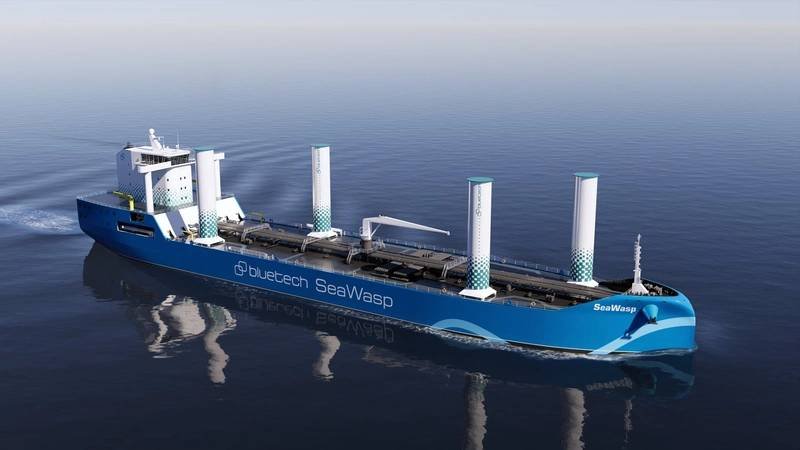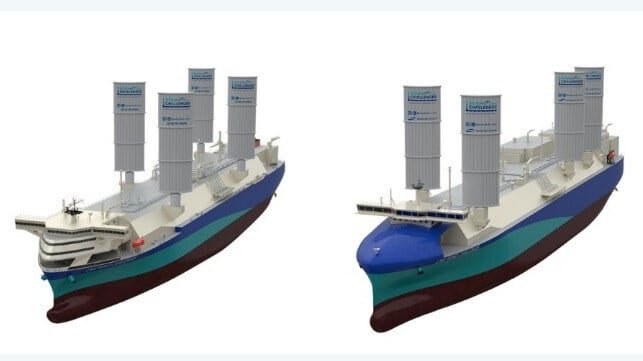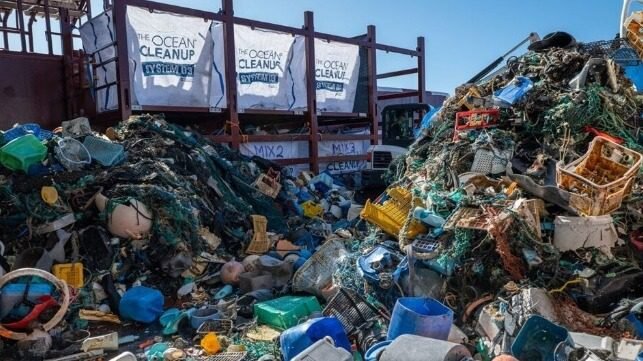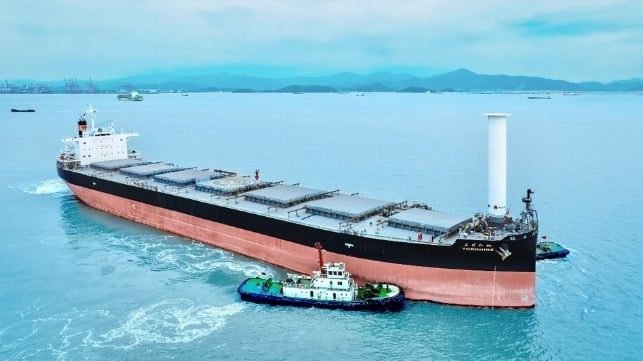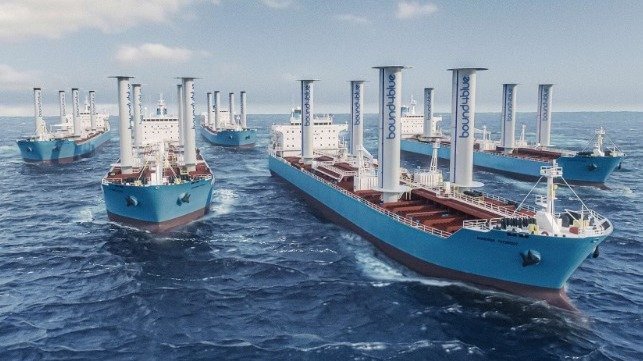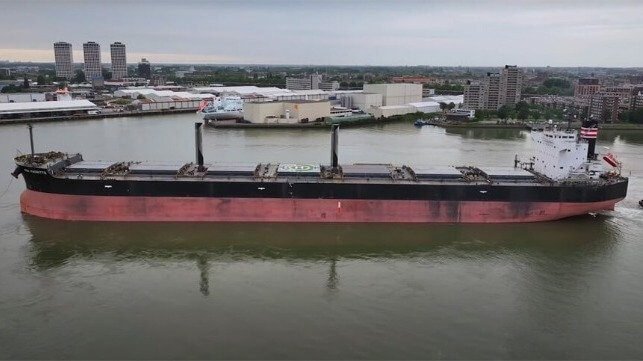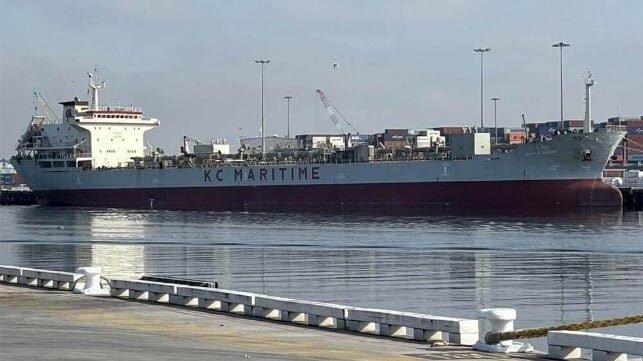The initiative to reduce shipping emissions through wind-assisted propulsion is gaining momentum, highlighted by Anemoi Marine’s recent installation of five rotor sails on the very large ore carrier (VLOC) NSU Tubarao, operated by Brazilian mining company Vale International. The Tubarao, built by Japan Marine United and delivered in 2020, is one of the largest bulk carriers globally, measuring 361 meters and weighing 400,000 dwt. This retrofit marks a significant advancement in sustainable shipping practices.
The rotor sails, each 35 meters tall and 5 meters in diameter, harness the Magnus effect to generate lift and thrust, thereby decreasing reliance on engine power for maintaining speed. This innovative technology is projected to cut the vessel’s fuel consumption and CO2 emissions by approximately 6% to 12% annually. The installation was carried out during a scheduled dry docking at Zhoushan Xinya Shipyard in China, and the sails can be folded for flexibility during cargo operations.
With the Tubarao retrofit, Anemoi has now equipped over 1.6 million dwt of vessel tonnage with its wind-assisted technology. Additionally, the vessel received a new shaft generator to enhance overall energy efficiency, optimizing fuel use when operating the rotor sails. Clare Urmston, CEO of Anemoi, emphasized the project’s significance in demonstrating the industry’s growing confidence in wind power as a means to achieve lower emissions in shipping.
Vale has been actively investing in innovative technologies to improve shipping efficiency and reduce emissions. Since 2020, the company has pledged up to $6 billion to lower scope 1 and 2 emissions by 33% by 2030, alongside a commitment to reduce scope 3 emissions by 15% by 2035. As a leading producer of iron ore and other minerals, Vale continues to enhance its fleet, recently signing long-term charter agreements for new Guaibamax vessels that will also feature rotor sails and dual-fuel capabilities.
Share it now








